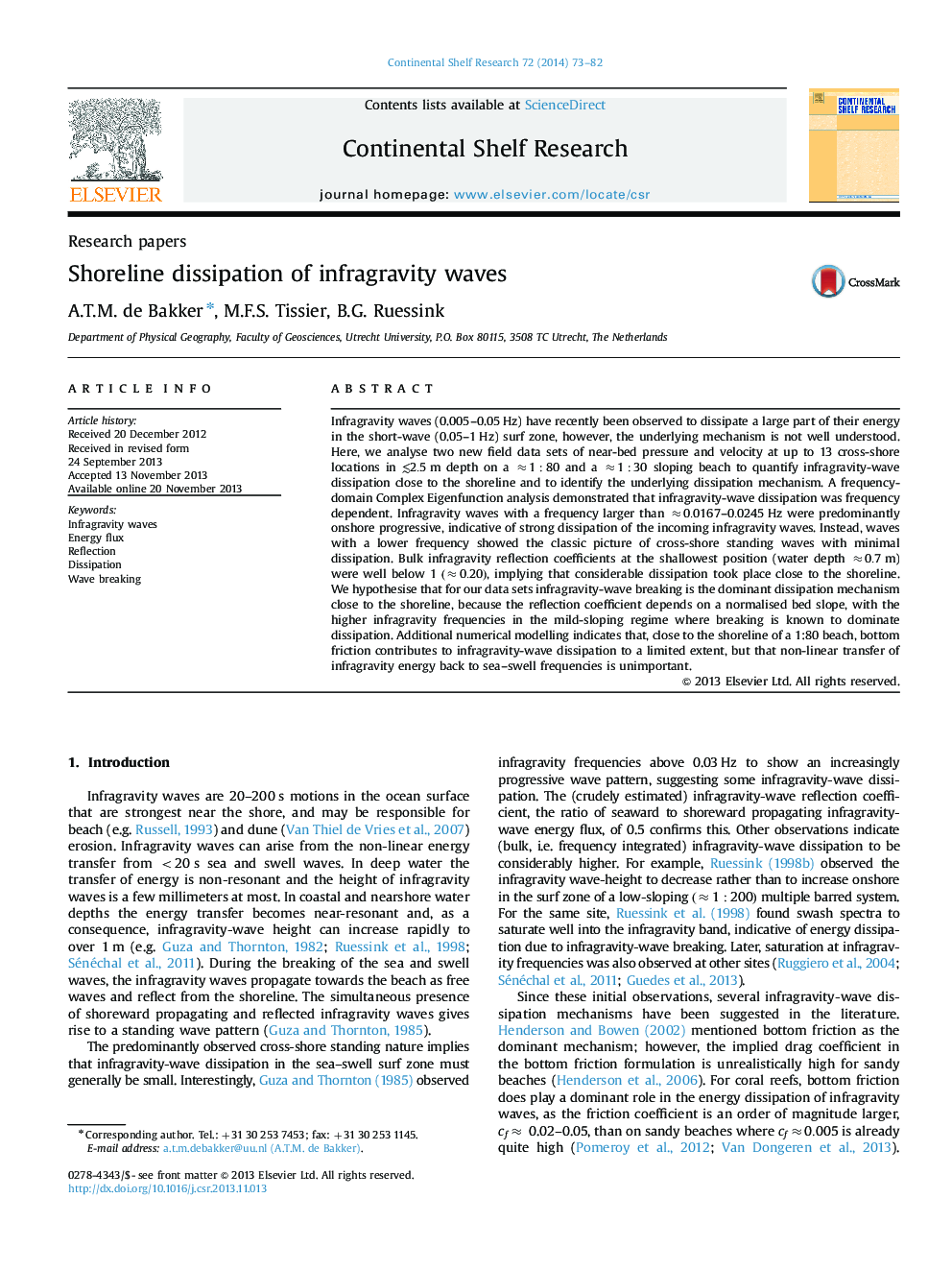| Article ID | Journal | Published Year | Pages | File Type |
|---|---|---|---|---|
| 6383241 | Continental Shelf Research | 2014 | 10 Pages |
Abstract
Infragravity waves (0.005-0.05Â Hz) have recently been observed to dissipate a large part of their energy in the short-wave (0.05-1Â Hz) surf zone, however, the underlying mechanism is not well understood. Here, we analyse two new field data sets of near-bed pressure and velocity at up to 13 cross-shore locations in â²2.5m depth on a â1:80 and a â1:30 sloping beach to quantify infragravity-wave dissipation close to the shoreline and to identify the underlying dissipation mechanism. A frequency-domain Complex Eigenfunction analysis demonstrated that infragravity-wave dissipation was frequency dependent. Infragravity waves with a frequency larger than â0.0167-0.0245Hz were predominantly onshore progressive, indicative of strong dissipation of the incoming infragravity waves. Instead, waves with a lower frequency showed the classic picture of cross-shore standing waves with minimal dissipation. Bulk infragravity reflection coefficients at the shallowest position (water depth â0.7m) were well below 1 (â0.20), implying that considerable dissipation took place close to the shoreline. We hypothesise that for our data sets infragravity-wave breaking is the dominant dissipation mechanism close to the shoreline, because the reflection coefficient depends on a normalised bed slope, with the higher infragravity frequencies in the mild-sloping regime where breaking is known to dominate dissipation. Additional numerical modelling indicates that, close to the shoreline of a 1:80 beach, bottom friction contributes to infragravity-wave dissipation to a limited extent, but that non-linear transfer of infragravity energy back to sea-swell frequencies is unimportant.
Related Topics
Physical Sciences and Engineering
Earth and Planetary Sciences
Geology
Authors
A.T.M. de Bakker, M.F.S. Tissier, B.G. Ruessink,
